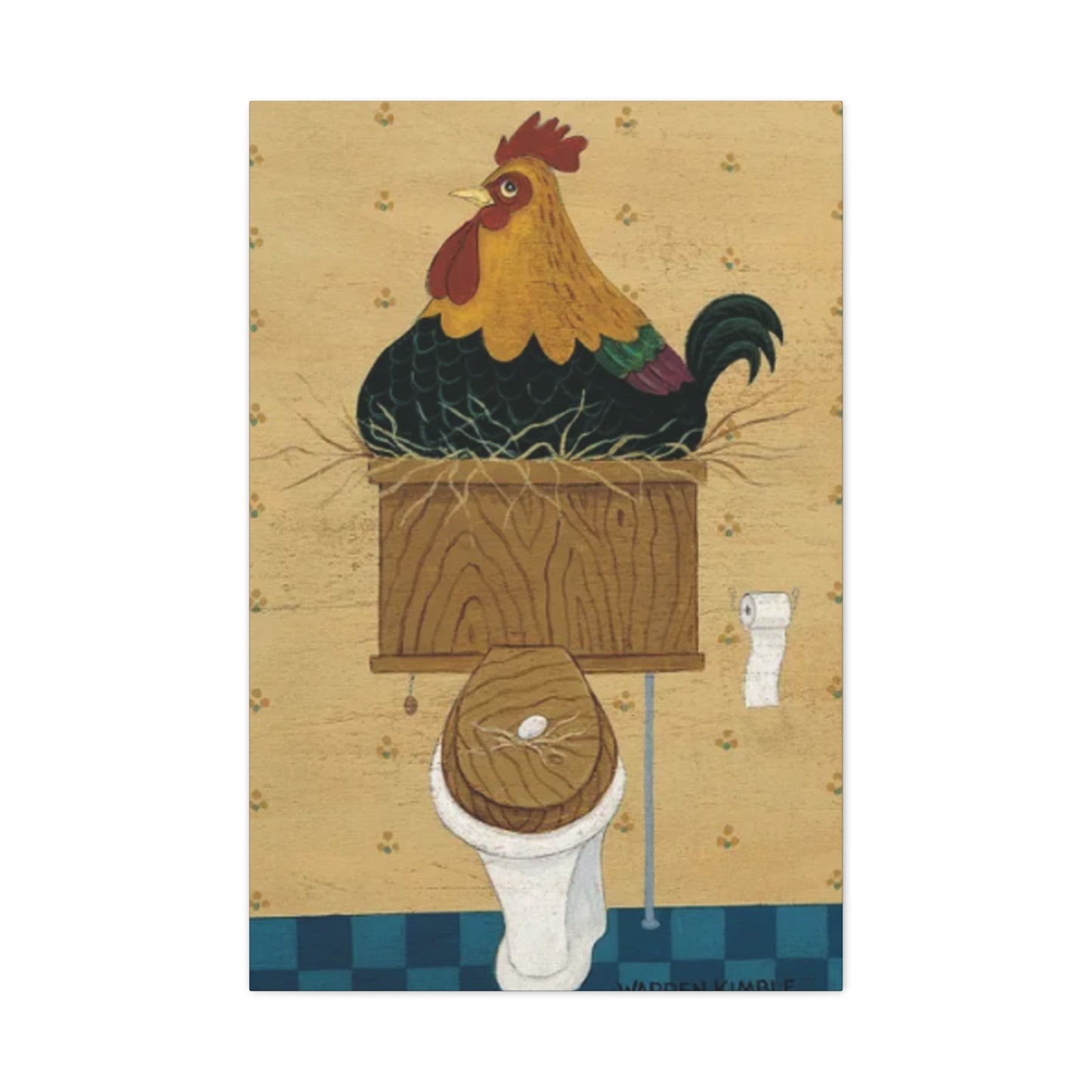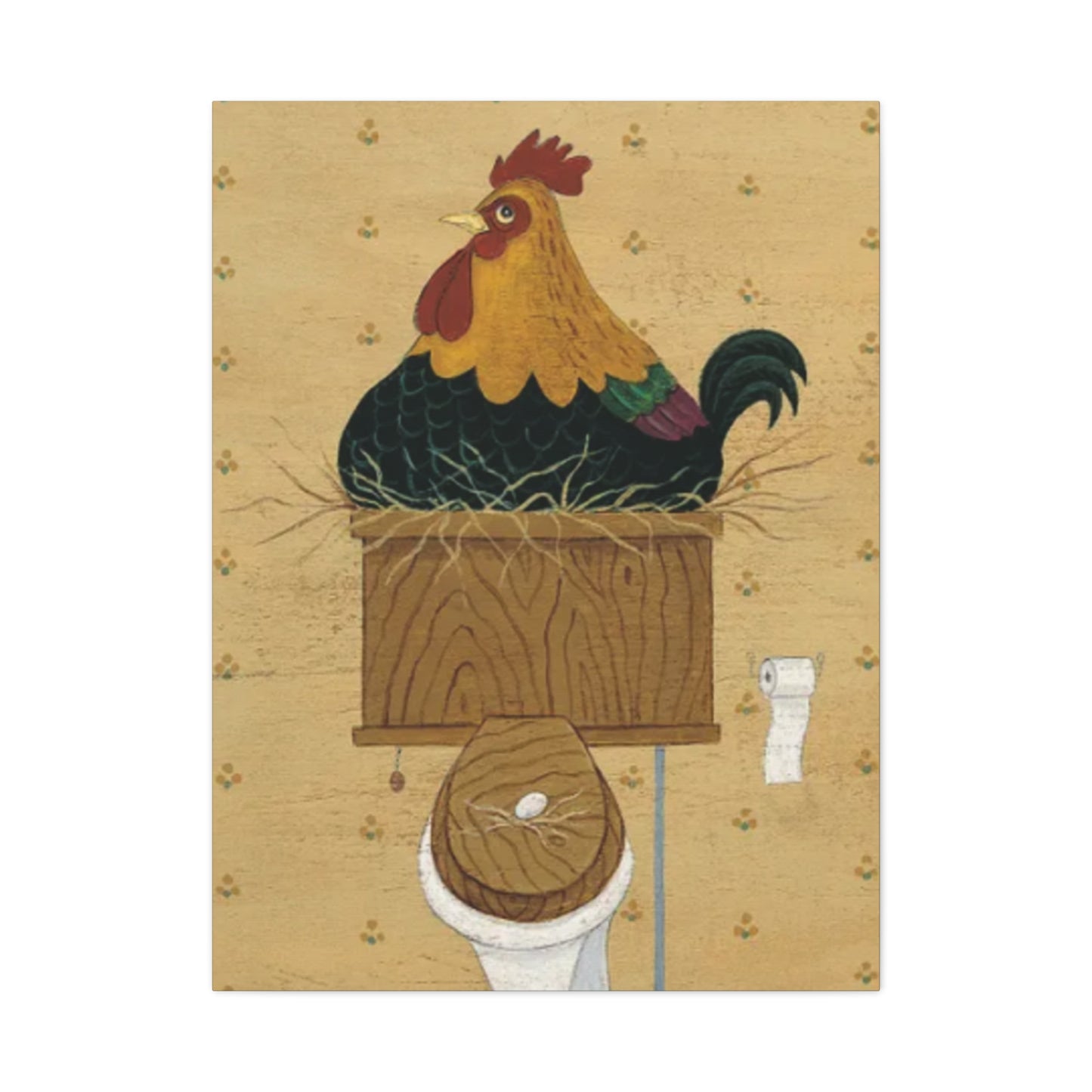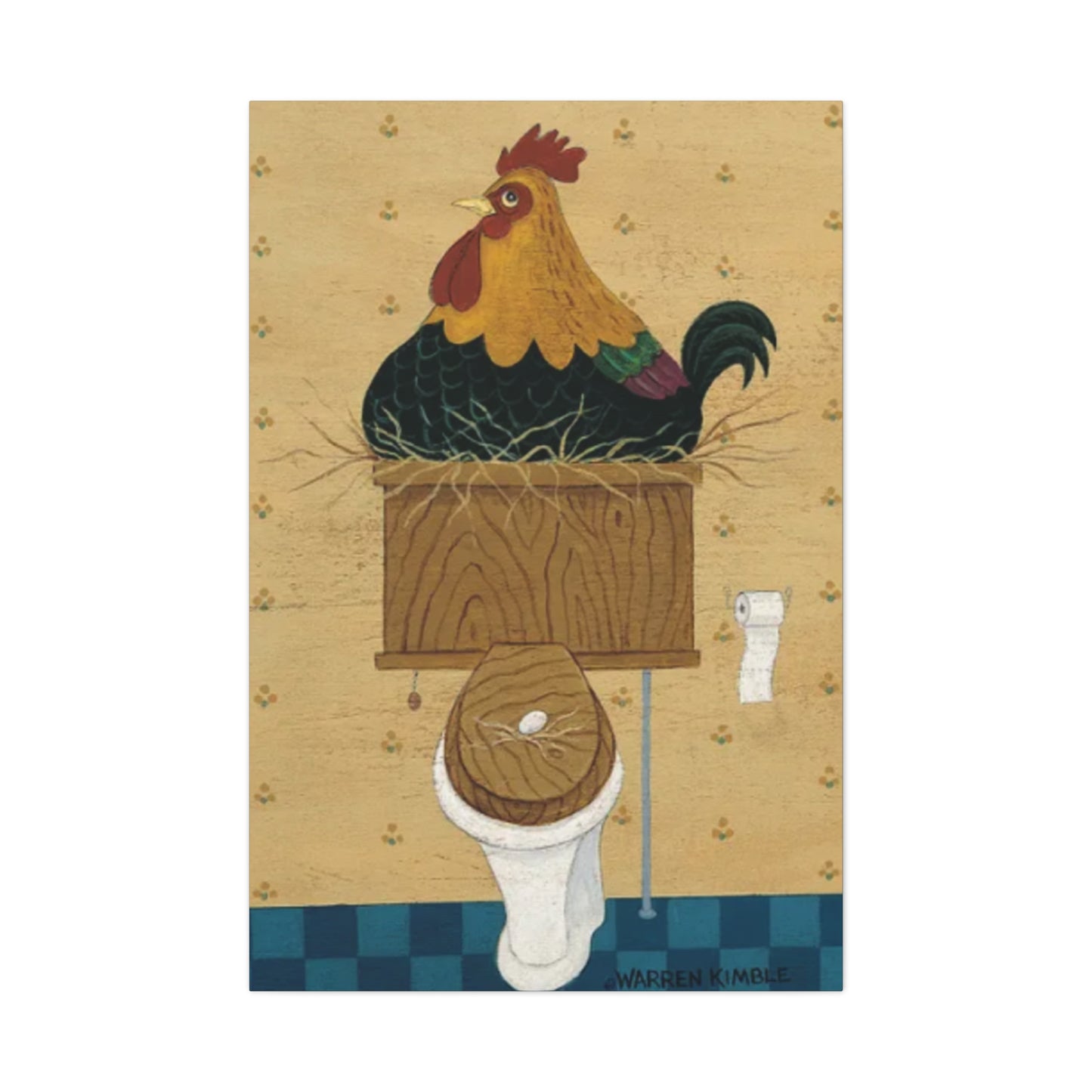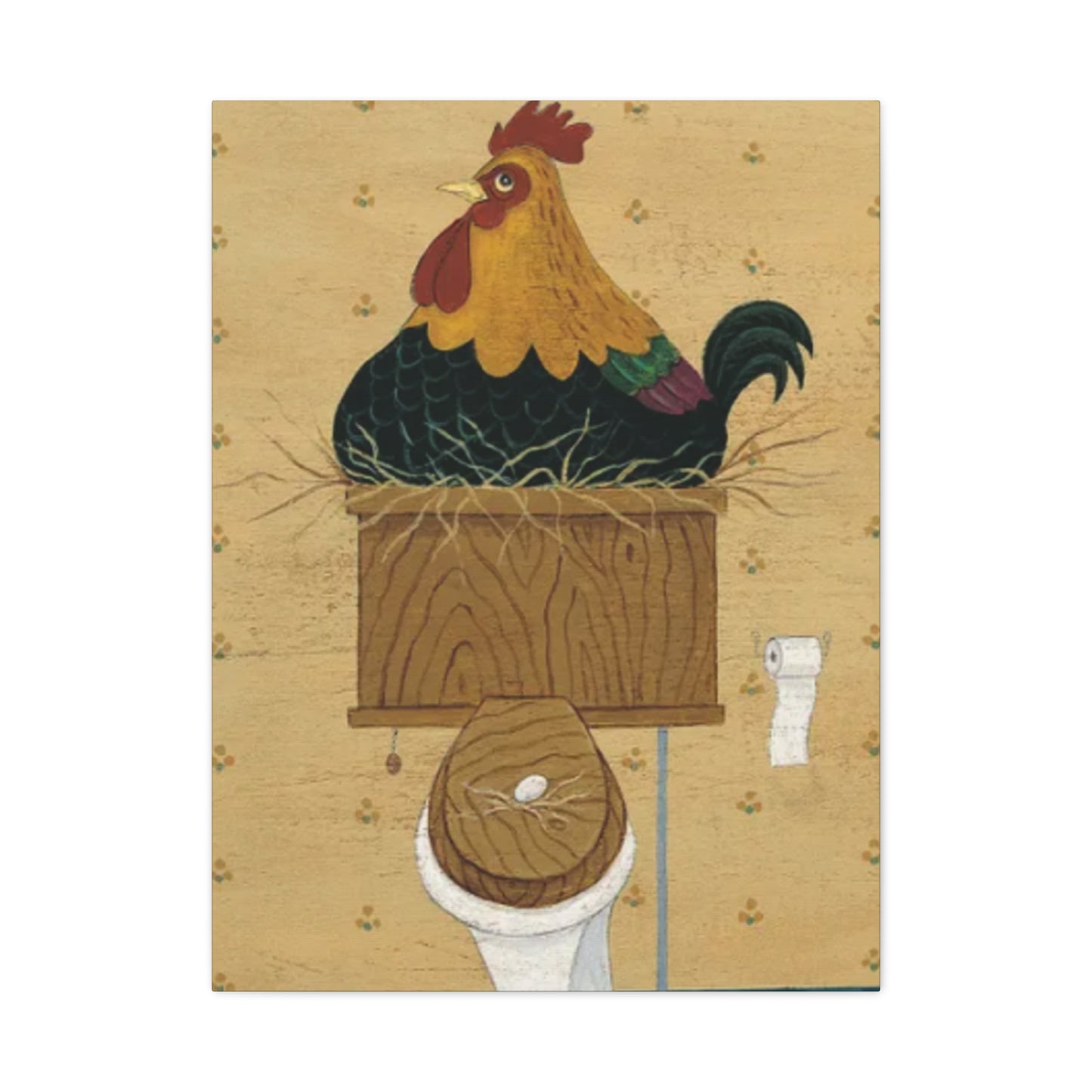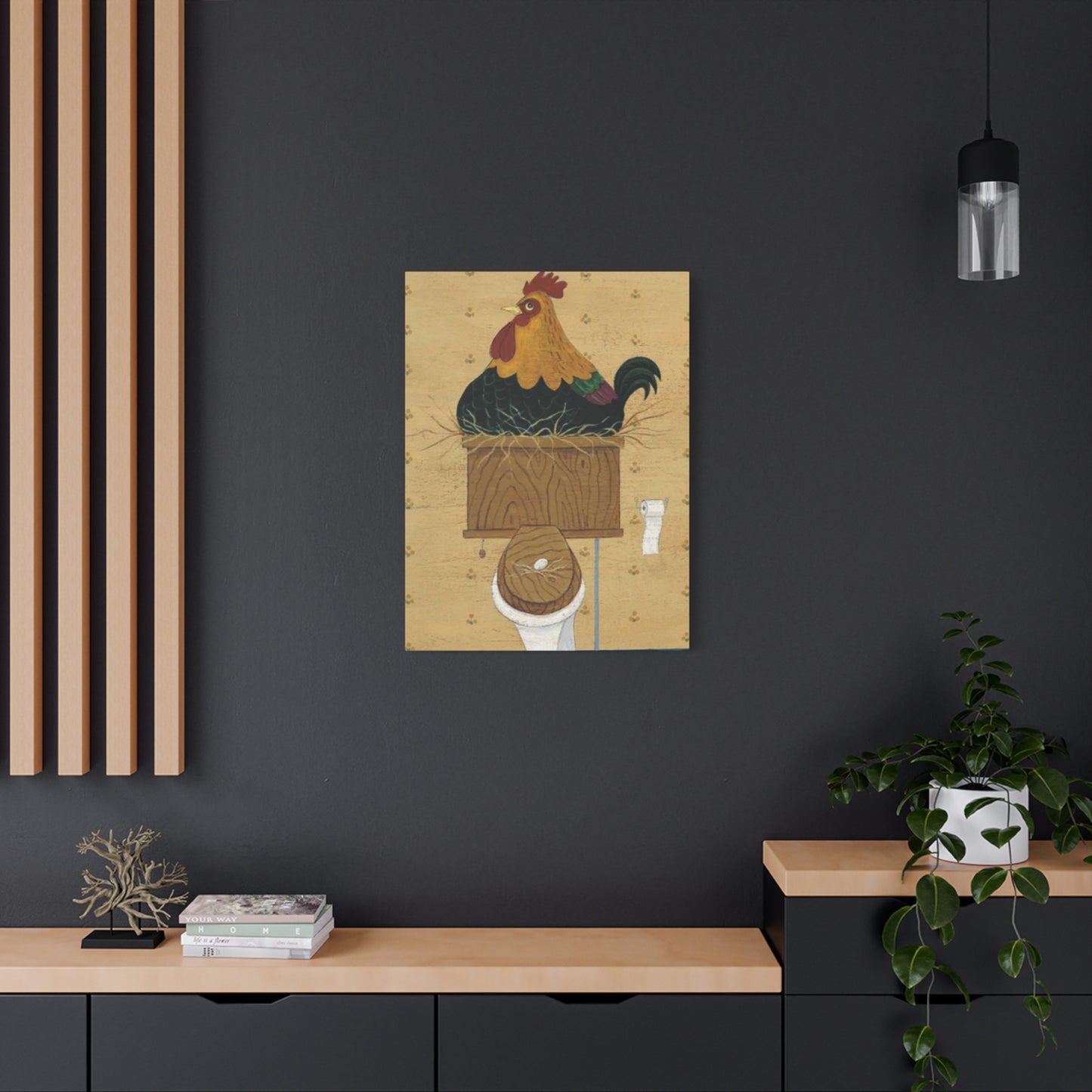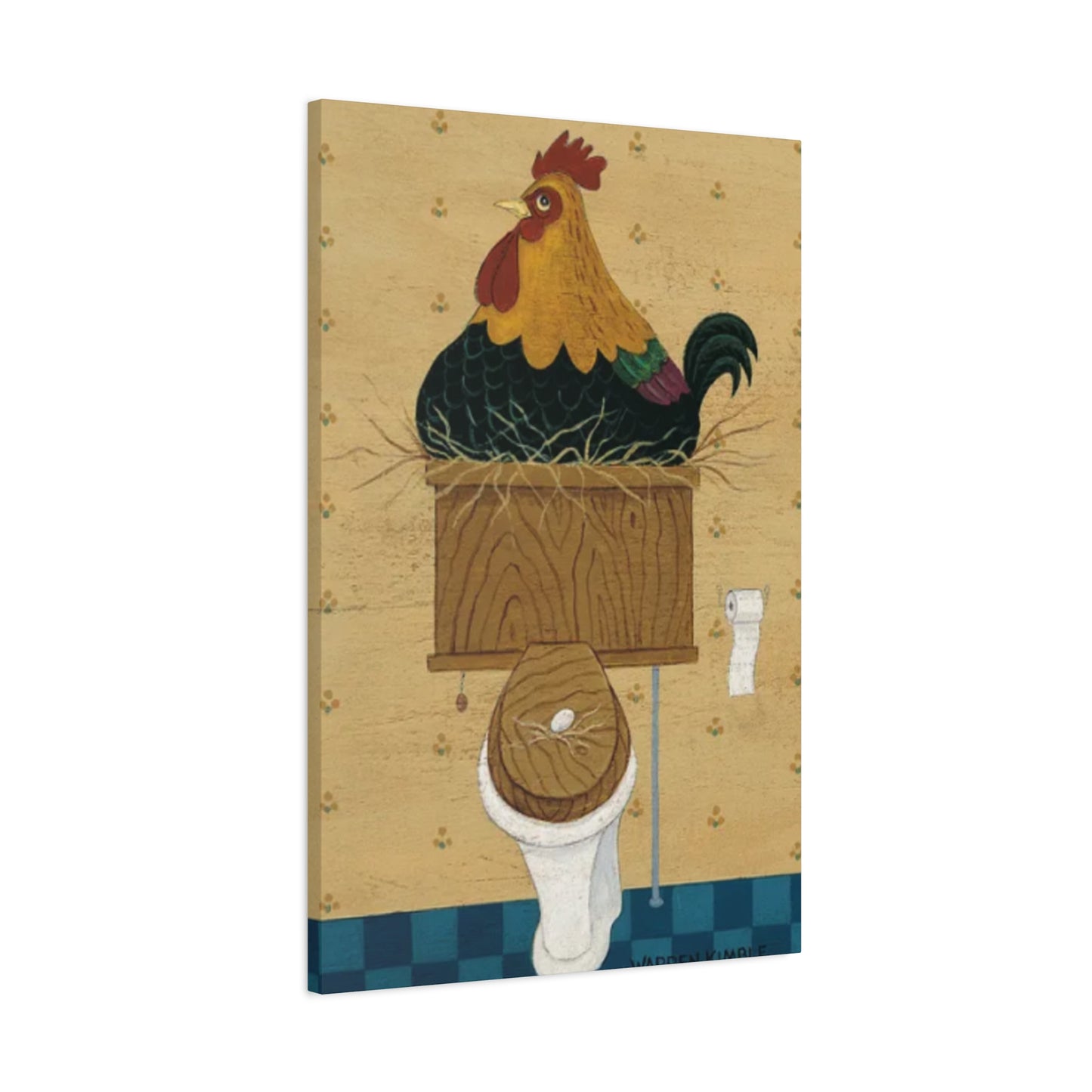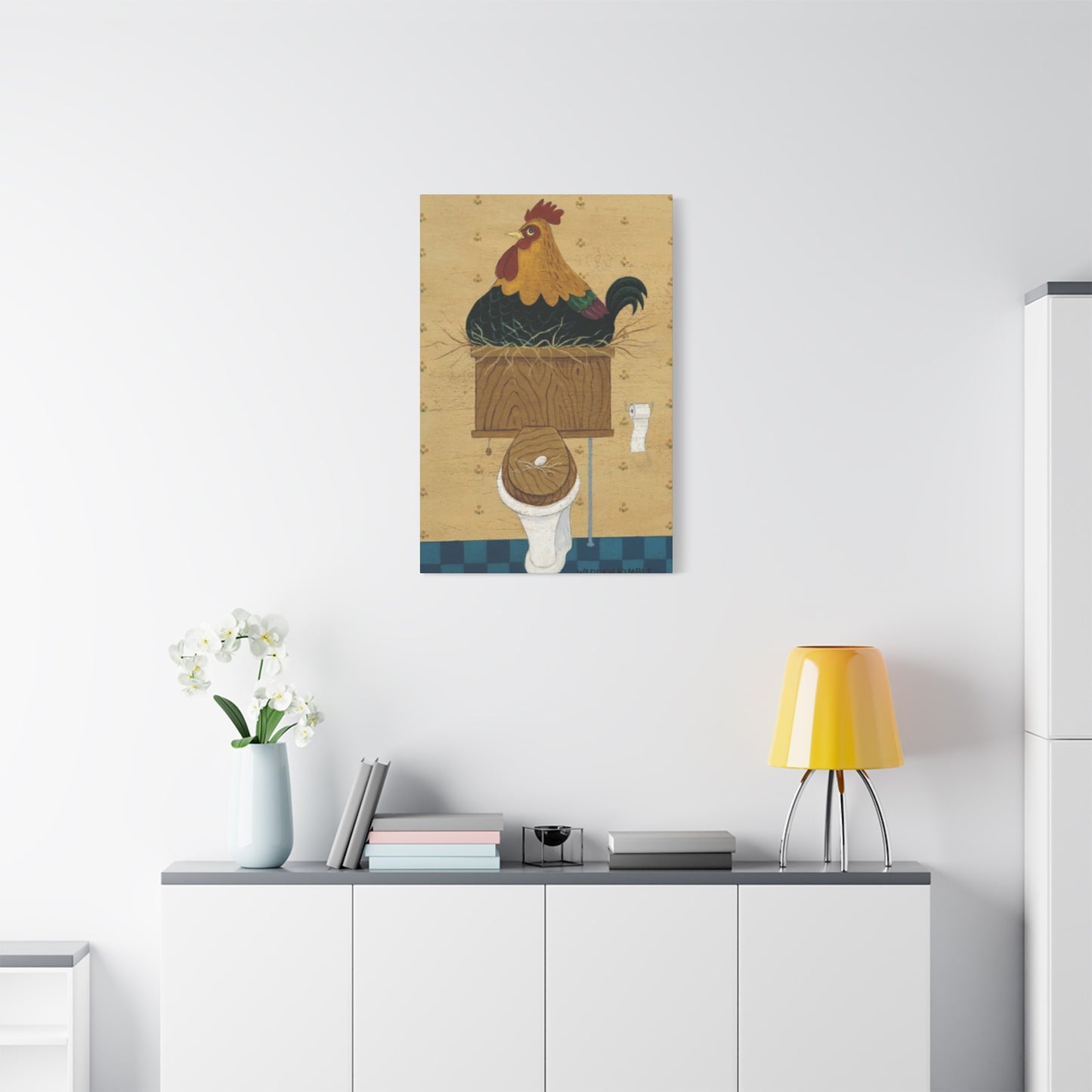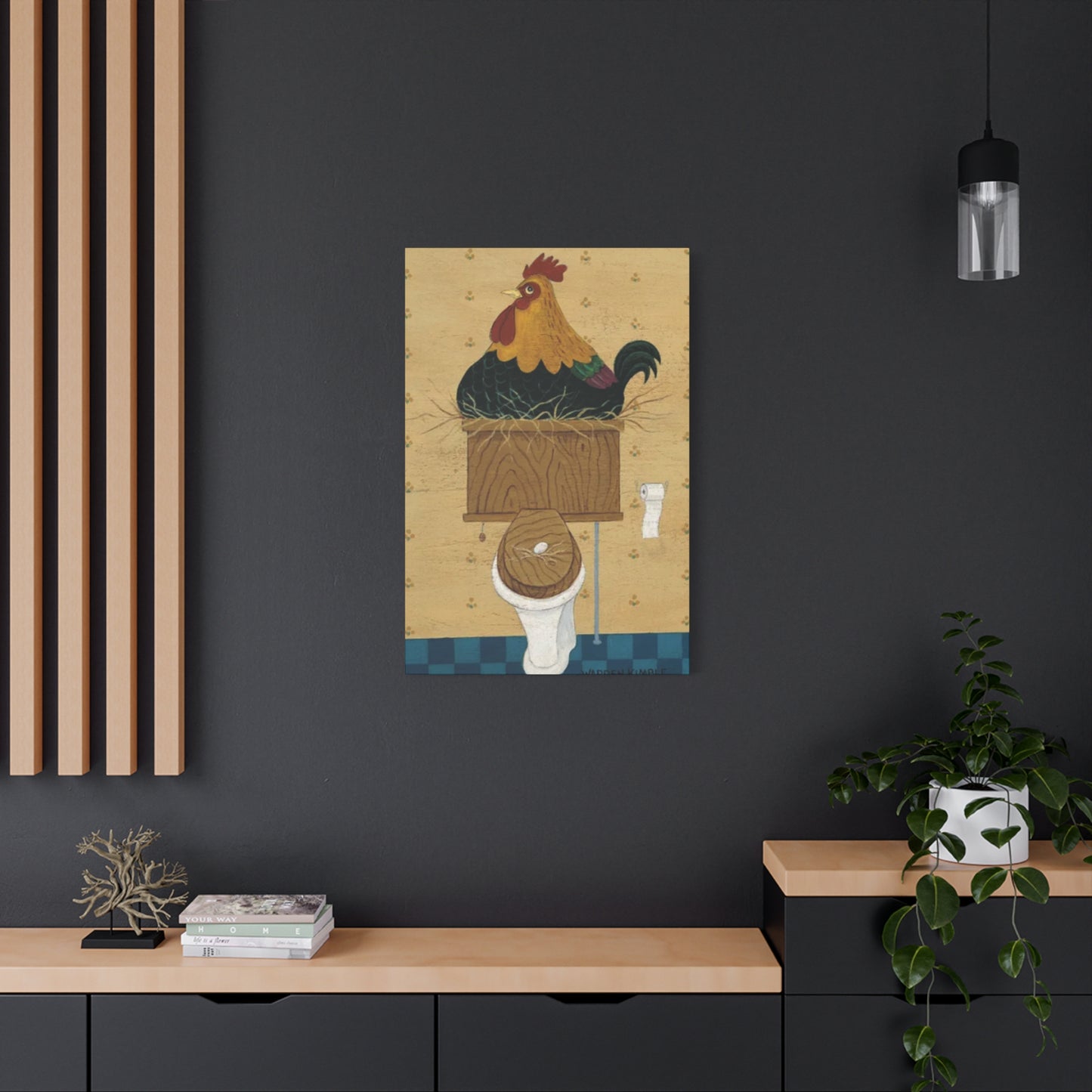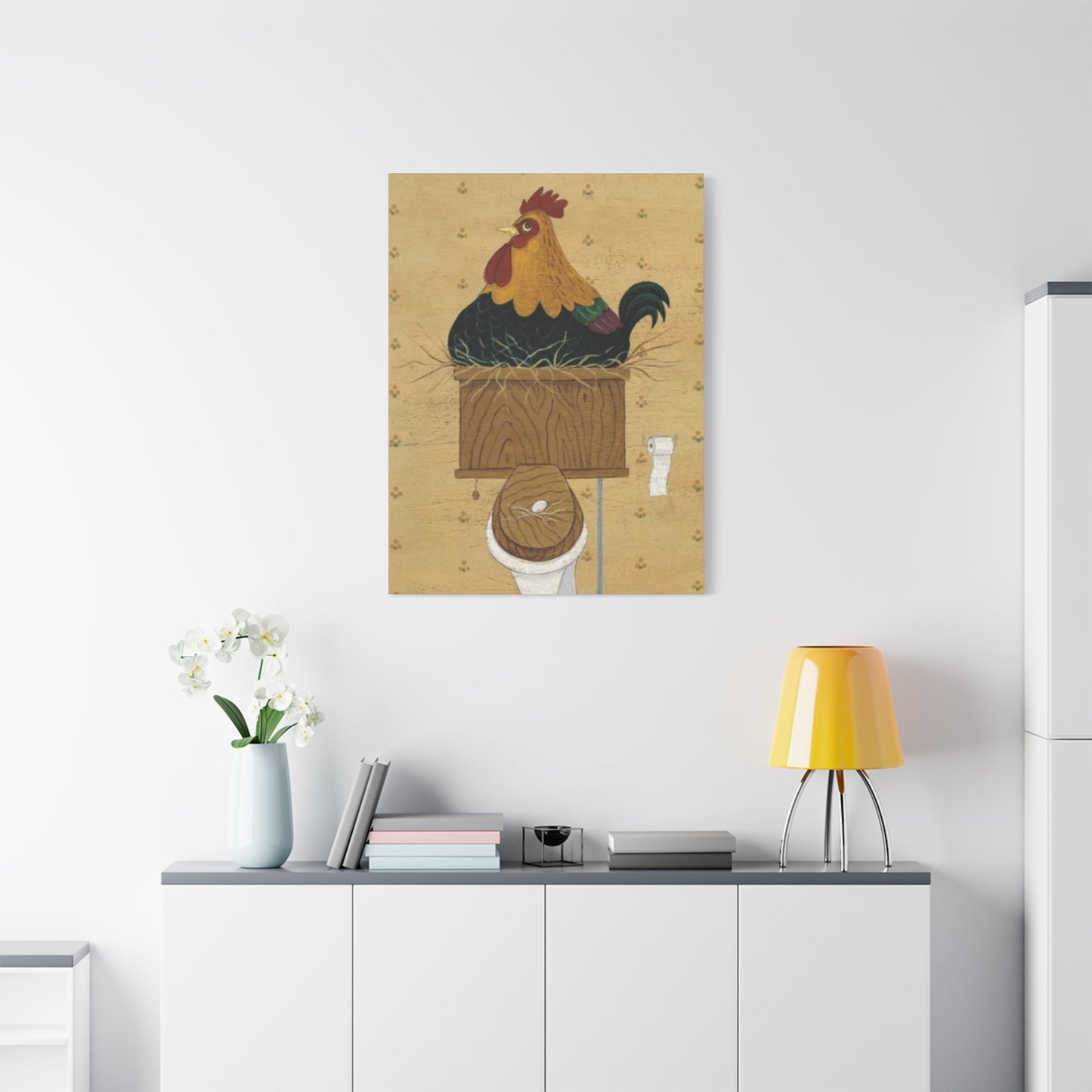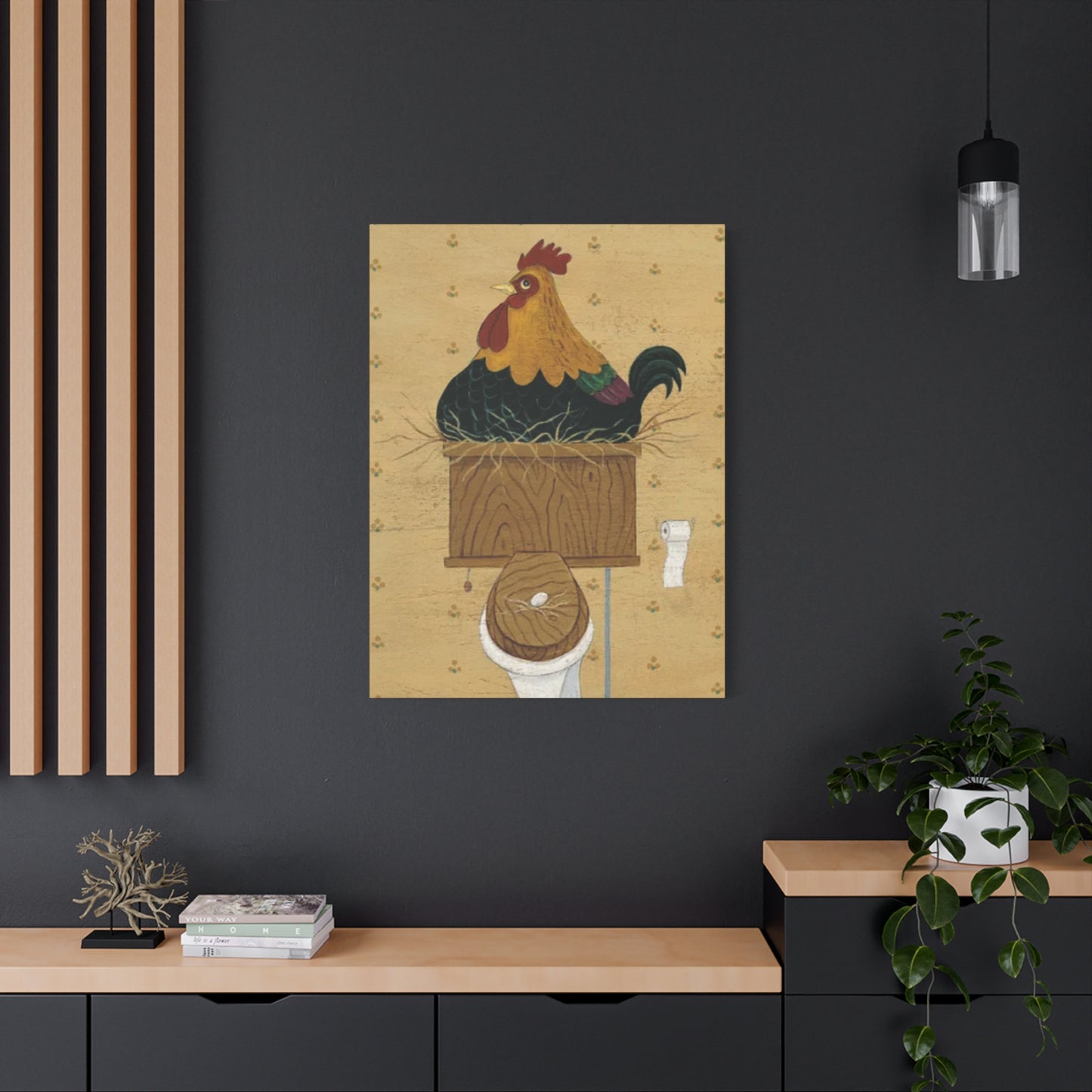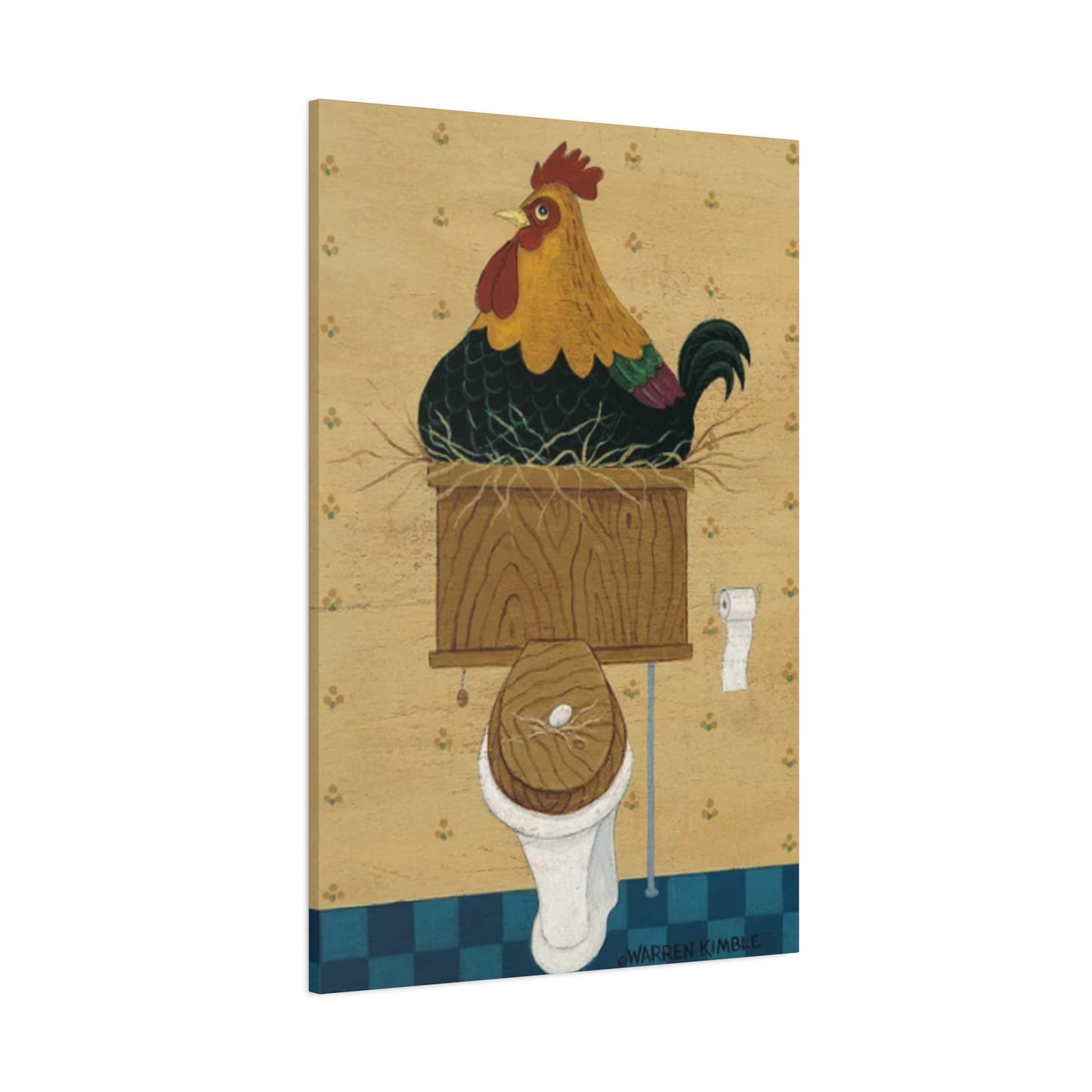Vibrant Poultry Paintings: Mastering the Art of Chicken kimble warren Wall art Décor
The world of artistic expression has embraced countless subjects throughout history, yet few creatures capture the imagination quite like chickens. These remarkable barnyard inhabitants have transcended their agricultural origins to become beloved subjects in contemporary art, offering artists and enthusiasts alike an opportunity to explore vibrant colors, dynamic compositions, and charming character studies. The appeal of chicken-themed artwork extends far beyond rural settings, finding its way into urban homes, contemporary galleries, and modern living environments where personality and warmth are valued above conventional décor choices.
Colorful Chicken Creations
Creating stunning chicken artwork begins with understanding the unique characteristics that make these birds so visually appealing. The natural beauty of chickens lies in their diverse plumage patterns, expressive eyes, and distinctive body language that communicates everything from curiosity to confidence. Artists who specialize in colorful chicken creations often emphasize the rich variety of hues found in different breeds, from the deep burgundy of Rhode Island Reds to the striking black and white patterns of Barred Plymouth Rocks.
The process of developing colorful chicken creations requires careful observation of how light plays across feathers, creating shadows and highlights that bring dimensionality to the artwork. Professional artists recommend spending time studying live chickens or high-quality photographs to understand the subtle color variations within a single bird. The neck feathers, for instance, often display an iridescent quality that shifts from green to purple depending on the angle of observation.
When approaching colorful chicken creations, consider the emotional impact of your color choices. Warm colors like reds, oranges, and yellows can convey energy and happiness, while cooler blues and greens might suggest tranquility or mystery. Many successful chicken artists deliberately exaggerate natural colors to create more dynamic and eye-catching pieces that command attention in any room.
The technique of layering colors adds depth and richness to chicken artwork. Start with base colors and gradually build up layers of complementary and analogous hues to achieve the desired vibrancy. This approach works particularly well when depicting the complex feather patterns found on breeds like Ameraucanas or Polish chickens, where multiple colors blend seamlessly together.
Texture plays a crucial role in colorful chicken creations. The fluffy appearance of chicken feathers can be achieved through various techniques, including dry brushing, stippling, or using palette knives to create tactile surfaces. These methods help viewers almost feel the softness of the feathers, adding another dimension to the visual experience.
Painted Poultry Perfection
Achieving painted poultry perfection requires mastering several fundamental artistic principles while maintaining the spontaneous charm that makes chicken art so appealing. The key to creating compelling chicken paintings lies in balancing technical skill with artistic intuition, allowing the natural personality of these birds to shine through the medium.
Composition forms the foundation of painted poultry perfection. Consider the rule of thirds when positioning your chicken subject, placing key features like the eye or comb at intersection points to create visual interest. However, don't be afraid to break conventional rules when it serves the artistic vision. Sometimes a centrally placed chicken creates a bold, confident statement that perfectly captures the bird's personality.
Understanding chicken anatomy is essential for painted poultry perfection. Study the proportions carefully, noting how the head relates to the body size, the length of the neck, and the positioning of the legs. Chickens have a unique silhouette that becomes instantly recognizable when rendered accurately, even in highly stylized interpretations.
Color harmony contributes significantly to painted poultry perfection. Develop a consistent color palette that complements your chosen chicken breed while enhancing the overall mood of the piece. Consider using a limited palette initially, then gradually expanding your color range as you become more comfortable with chicken subjects.
Brushwork technique can make or break painted poultry perfection. Experiment with different brush sizes and shapes to achieve various textures. Fine detail brushes work well for intricate feather patterns and facial features, while larger brushes can effectively capture the broader forms of the body and wings. Don't overlook the importance of brush direction – following the natural growth pattern of feathers creates more convincing results.
Lighting plays a crucial role in painted poultry perfection. Chickens look most appealing when painted with warm, natural lighting that enhances their colors and creates gentle shadows. Avoid harsh lighting that might flatten the form or create unflattering shadows. Instead, aim for lighting that sculpts the form while maintaining the cheerful, approachable quality that makes chicken art so beloved.
Bring Chickens to Life in Art
The challenge of bringing chickens to life in art extends beyond mere representation to capturing the essence and personality that makes each bird unique. Successful chicken artists understand that these birds possess distinct characteristics and behaviors that, when translated to canvas or paper, create engaging and memorable artwork.
Observational skills form the cornerstone of bringing chickens to life in art. Spend time watching chickens in various situations – feeding, roosting, interacting with other chickens, or simply standing alert. Notice how they cock their heads when curious, puff their feathers when cold, or strut with confidence when establishing dominance. These behavioral observations provide the foundation for creating artwork that resonates with viewers who recognize these familiar chicken mannerisms.
Capturing expression in chicken faces requires particular attention to the eyes, which serve as windows to their personality. Chicken eyes are remarkably expressive, capable of conveying alertness, contentment, suspicion, or curiosity. The positioning of the head and the angle of the beak also contribute significantly to the overall expression. A slightly tilted head suggests curiosity, while an upright, alert posture communicates confidence or wariness.
Movement and gesture play vital roles in bringing chickens to life in art. Even in static paintings, the suggestion of movement through body position, feather arrangement, and implied action creates dynamic compositions. Consider depicting chickens in characteristic poses – pecking at the ground, flapping wings, or engaging in social interactions with other birds.
The surrounding environment contributes to bringing chickens to life in art by providing context and storytelling opportunities. While the chicken remains the focal point, thoughtful background elements can enhance the narrative without overwhelming the subject. Simple suggestions of farm settings, natural environments, or even abstract backgrounds that complement the chicken's colors can provide the perfect support for your feathered subject.
Emotional connection is perhaps the most important aspect of bringing chickens to life in art. Viewers should feel drawn to your chicken subjects, recognizing something familiar or endearing in their expressions and poses. This connection transforms a simple animal painting into a piece that speaks to people's hearts and memories, whether they grew up on a farm or simply appreciate the charm of these remarkable birds.
Vibrant Chicken Wall Decor
Modern homes increasingly embrace vibrant chicken wall decor as a way to inject personality and warmth into living environments. This trend reflects a growing appreciation for artwork that breaks away from traditional, formal subjects in favor of pieces that spark conversation and bring joy to daily life. Vibrant chicken wall decor serves multiple purposes, functioning as both artistic expression and mood enhancement.
Scale considerations are crucial when selecting vibrant chicken wall decor for different rooms. Large, statement pieces work beautifully in spacious areas like living rooms or dining areas, where they can serve as focal points that anchor the room's design. Smaller chicken artworks cluster effectively in groupings, creating gallery walls that tell a cohesive story while filling larger wall areas with visual interest.
Color coordination with existing décor requires thoughtful planning when incorporating vibrant chicken wall decor. While chicken art often features bold, eye-catching colors, successful integration depends on finding pieces that complement rather than clash with your existing color scheme. Consider the dominant colors in your room and look for chicken artwork that either harmonizes with these hues or provides pleasing contrast that energizes the environment.
Placement strategies for vibrant chicken wall decor can dramatically impact the overall effect in a room. Eye-level positioning ensures optimal viewing, but don't overlook opportunities to place chicken art in unexpected locations that surprise and delight visitors. Hallways, breakfast nooks, and even powder rooms can benefit from the cheerful presence of well-chosen chicken artwork.
Mixing and matching different styles of vibrant chicken wall decor creates layered, interesting displays that reflect personal taste and artistic appreciation. Combine realistic chicken portraits with more abstract or whimsical interpretations to create dynamic walls that offer multiple points of visual interest. This approach prevents monotony while showcasing the versatility of chicken subjects in artistic expression.
Lighting considerations for vibrant chicken wall decor ensure that your artwork receives proper illumination to showcase the colors and details effectively. Natural light enhances most chicken art, but be mindful of direct sunlight that might cause fading over time. Artificial lighting options include picture lights, track lighting, or strategically placed lamps that highlight your chicken artwork during evening hours.
Art That Clucks with Color
Creating art that clucks with color requires understanding how different hues interact and influence viewer perception while maintaining the authentic charm of chicken subjects. Color theory becomes particularly important when working with chicken art, as these birds naturally display a wide range of colors that can be enhanced or stylized to create maximum visual impact.
Primary color applications in chicken art often focus on the natural reds found in combs and wattles, which can be intensified to create dramatic focal points. These warm reds pair beautifully with complementary colors like greens and blues, creating dynamic color relationships that energize the entire composition. Artists frequently use this natural red as a starting point for developing comprehensive color schemes.
Secondary color combinations offer rich possibilities for art that clucks with color. Orange feathers, whether natural or artistically enhanced, create warmth and energy in chicken paintings. Purple shadows add depth and sophistication, while green accents can reference the natural environment or provide cool balance to warmer tones. These secondary colors often appear in the iridescent sheen of chicken feathers, providing authentic reference points for artistic interpretation.
Tertiary colors expand the palette possibilities for art that clucks with color, offering subtle variations that add sophistication to chicken artwork. Colors like burnt sienna, olive green, and golden yellow provide earthy, natural tones that ground more vibrant accents while maintaining visual interest. These colors often appear in chicken environments or in the subtle variations within feather patterns.
Color temperature affects the overall mood of art that clucks with color. Warm color schemes featuring reds, oranges, and yellows create inviting, energetic artwork that brightens any room. Cool color schemes using blues, greens, and purples can create more sophisticated, calming pieces that still celebrate the chicken subject while offering different emotional responses.
Contrast levels in art that clucks with color determine the visual impact and readability of the artwork. High contrast pieces with stark value differences create bold, graphic effects that command attention from across a room. Lower contrast works offer subtler, more nuanced viewing experiences that reward closer inspection. Both approaches have their place in successful chicken art collections.
Whimsical Painted Chickens
The realm of whimsical painted chickens opens up endless creative possibilities that transcend literal representation to explore humor, fantasy, and pure artistic joy. These playful interpretations of chicken subjects allow artists to experiment with unconventional colors, exaggerated features, and imaginative scenarios that delight viewers while maintaining recognizable chicken characteristics.
Character development in whimsical painted chickens often involves attributing human-like qualities or emotions to the bird subjects. This anthropomorphization creates instant connection with viewers who see familiar expressions or attitudes reflected in the chicken faces. Whether depicting a scholarly chicken wearing glasses or a fashionable hen with a colorful hat, these character-driven approaches make each piece unique and memorable.
Exaggerated proportions contribute significantly to the charm of whimsical painted chickens. Oversized eyes create endearing expressions that appeal to viewers' emotions, while elongated necks or enlarged combs can add comic effect or elegant sophistication depending on the artistic treatment. These departures from anatomical accuracy serve the higher purpose of artistic expression and emotional connection.
Fantasy elements in whimsical painted chickens might include chickens with rainbow plumage, birds adorned with flowers or jewelry, or chickens engaged in human activities like reading books or playing musical instruments. These fantastical additions transform ordinary chicken subjects into extraordinary artistic statements that spark imagination and conversation.
Color experimentation reaches its peak in whimsical painted chickens, where artists feel free to abandon natural coloration in favor of purely aesthetic choices. Purple chickens, blue roosters, or multicolored hens become acceptable and even celebrated when executed with skill and artistic vision. This freedom allows for unlimited creative expression while maintaining the beloved chicken subject matter.
Storytelling opportunities abound in whimsical painted chickens, where single pieces can suggest entire narratives or emotional states. A chicken wearing a party hat might celebrate life's joys, while a contemplative bird gazing at the horizon could represent dreams and aspirations. These narrative elements add depth to what might otherwise be simple animal portraits.
Feathered Friends on Canvas
Translating the beauty and personality of feathered friends onto canvas requires technical skill combined with emotional understanding of these remarkable birds. Canvas provides an ideal medium for chicken art, offering texture and durability that complement the subject matter while allowing for various painting techniques and styles.
Canvas preparation plays a crucial role in creating lasting feathered friends artwork. Proper priming ensures paint adhesion and color vibrancy while providing the right surface texture for your chosen painting style. Some artists prefer smooth, fine-grained canvases for detailed work, while others opt for coarser textures that add interest and depth to their brushwork.
Paint selection for feathered friends on canvas depends on personal preference and desired effects. Acrylic paints offer quick drying times and easy cleanup, making them ideal for artists who work in layers or want to make rapid changes. Oil paints provide longer working times and superior blending capabilities, perfect for creating smooth feather transitions and subtle color variations.
Brushwork techniques for feathered friends on canvas vary according to the desired artistic effect. Short, quick strokes can effectively capture the texture of individual feathers, while longer, flowing strokes work well for depicting the smooth contours of the chicken's body. Dry brush techniques create textural interest, while wet-on-wet applications produce soft, blended effects ideal for backgrounds or atmospheric elements.
Composition planning ensures successful feathered friends on canvas by establishing strong focal points and visual flow. Consider the chicken's placement within the canvas boundaries, leaving appropriate negative areas that don't feel cramped or overwhelming. The direction of the chicken's gaze can lead the viewer's eye through the composition, creating dynamic visual pathways that enhance the overall impact.
Color mixing for feathered friends on canvas requires understanding both the natural colors of chickens and the principles of color theory. Practice mixing skin tones for combs and wattles, feather colors for different breeds, and environmental colors that complement the chicken subject. Keep color mixing notes for future reference, as achieving consistent results across multiple paintings requires systematic approaches.
Brighten Your Walls with Chickens
The strategic use of chicken artwork to brighten walls transforms ordinary rooms into cheerful, personality-filled environments that reflect the homeowner's appreciation for charming, unconventional art. Chicken-themed pieces naturally bring warmth and humor to any room, creating conversation starters while adding visual interest to blank wall areas.
Room selection for brightening walls with chickens depends on both aesthetic preferences and practical considerations. Kitchens naturally complement chicken artwork, creating thematic coherence that feels intentional and charming. However, chicken art works equally well in living rooms, bedrooms, home offices, and even bathrooms, where unexpected art choices can create delightful surprises for visitors.
Size considerations when brightening walls with chickens affect both visual impact and spatial harmony. Large statement pieces command attention and anchor room designs, while smaller works cluster effectively to create gallery walls or accent groupings. Consider the scale of your furniture and architectural features when selecting chicken artwork sizes that feel proportionate and balanced.
Color coordination strategies for brightening walls with chickens ensure that your artwork enhances rather than competes with existing décor elements. Identify the dominant colors in your room and look for chicken art that either complements these hues or provides pleasing contrast. Remember that chicken art naturally includes earth tones and warm colors that coordinate well with most decorating schemes.
Lighting enhancement maximizes the wall-brightening effect of chicken artwork by ensuring proper illumination that showcases colors and details. Natural light brings out the vibrancy in most chicken art, but artificial lighting options include picture lights, track systems, or strategically placed table lamps that highlight your chosen pieces during evening hours.
Grouping strategies for brightening walls with chickens create cohesive displays that feel intentional and professionally curated. Consider creating themed groupings that tell stories or showcase different artistic styles while maintaining visual unity through consistent framing or color coordination. These groupings can evolve over time as you discover new pieces that complement your existing collection.
Playful Chicken Paintings
The creation of playful chicken paintings embraces the inherent humor and charm found in these delightful barnyard characters while exploring artistic techniques that emphasize joy, movement, and personality. These works celebrate the lighter side of art, proving that serious artistic skill can be applied to subjects that simply make people smile.
Gesture and movement form the foundation of playful chicken paintings, where capturing the essence of chicken behavior creates immediate connection with viewers. Whether depicting chickens pecking at food, flapping wings in excitement, or engaging in social interactions with other birds, these action-oriented compositions bring life and energy to static artwork.
Facial expressions in playful chicken paintings require careful attention to the subtle features that convey personality and emotion. The angle of the head, the alertness in the eyes, and the position of the beak all contribute to the overall expression. Playful chicken paintings often exaggerate these features slightly to enhance their communicative power and create more engaging character studies.
Color choices for playful chicken paintings tend toward bright, cheerful hues that reinforce the positive, uplifting nature of the subject matter. While natural chicken colors provide excellent starting points, playful interpretations might include enhanced or entirely invented color schemes that serve the artistic vision rather than strict realism.
Composition in playful chicken paintings often breaks traditional rules in favor of dynamic, energetic arrangements that reflect the spontaneous nature of chicken behavior. Off-center positioning, diagonal lines, and asymmetrical balance can all contribute to the sense of movement and liveliness that defines successful playful chicken art.
Background treatments in playful chicken paintings range from simple color fields that showcase the chicken subjects to more elaborate settings that enhance the storytelling aspects of the work. The key is ensuring that background elements support rather than compete with the main subjects, maintaining focus on the playful chicken characters that drive the composition.
Bold and Beautiful Chicken Art
Creating bold and beautiful chicken art requires confidence in artistic choices combined with technical skill that elevates chicken subjects to fine art status. These pieces command attention through strong compositions, striking color choices, and masterful execution that celebrates both the artist's vision and the natural beauty of chicken subjects.
Scale and proportion in bold and beautiful chicken art often exceed typical expectations, with artists choosing to present chicken subjects in formats traditionally reserved for more conventional fine art subjects. Large canvases allow for detailed exploration of feather textures, subtle color variations, and complex compositions that reward extended viewing.
Color intensity distinguishes bold and beautiful chicken art from more modest interpretations. Deep, saturated colors create visual impact that draws viewers across rooms, while strategic use of contrasting hues adds drama and sophistication. These bold color choices require careful planning to maintain harmony while achieving maximum visual effect.
Technical execution in bold and beautiful chicken art demonstrates mastery of fundamental artistic principles applied to chicken subjects. This includes accurate drawing skills, understanding of light and shadow, color mixing expertise, and brushwork techniques that create convincing textures and forms. The beauty lies in the marriage of technical skill with subject matter that might initially seem humble or commonplace.
Compositional strength forms the backbone of bold and beautiful chicken art, with artists employing sophisticated design principles to create compelling visual experiences. Strong focal points, effective use of negative areas, and thoughtful consideration of visual flow ensure that these pieces hold their own alongside any fine art collection.
Emotional impact sets bold and beautiful chicken art apart from mere animal studies, creating pieces that resonate with viewers on deeper levels. Whether through the dignity of a majestic rooster, the maternal protectiveness of a hen with chicks, or the simple contentment of chickens in their natural environment, these works tap into universal emotions and experiences that transcend the specific subject matter.
Farmyard Fun in Paint
Exploring farmyard fun in paint opens up rich possibilities for artists to capture the joy, community, and natural rhythms of rural life while focusing on chicken subjects within their authentic environments. These pieces celebrate the harmonious relationship between chickens and their farmyard settings, creating artwork that tells stories about rural life and agricultural traditions.
Environmental context in farmyard fun paintings provides authentic backdrops that enhance rather than overwhelm the chicken subjects. Suggestions of barns, fence lines, hay bales, or natural vegetation create believable settings without requiring photographic detail. The key is providing enough environmental information to establish context while maintaining focus on the chicken characters.
Multiple subject compositions in farmyard fun paintings often feature groups of chickens interacting with each other or with other farm animals. These complex compositions require careful planning to ensure each subject receives appropriate attention while contributing to the overall narrative. Consider the relationships between different elements and how they support the central theme of farmyard life.
Seasonal variations in farmyard fun paintings add temporal context that enhances storytelling possibilities. Spring scenes might feature chickens with newly hatched chicks, summer compositions could emphasize lush vegetation and bright sunlight, autumn pieces might include harvest imagery, and winter scenes could show chickens adapted to colder conditions.
Lighting effects in farmyard fun paintings often reflect the natural lighting conditions found in rural settings. Golden hour lighting creates warm, nostalgic moods perfect for farmyard subjects, while dappled shade from trees adds visual interest and depth. These lighting choices contribute significantly to the overall atmosphere and emotional impact of the artwork.
Activity and interaction elements in farmyard fun paintings bring scenes to life through suggestions of natural chicken behaviors. Feeding time, dust baths, roosting, or simple foraging activities provide action and interest while remaining true to authentic chicken experiences. These behavioral elements help viewers connect with the subjects on familiar, relatable levels.
Chicken Art That Pops
Creating chicken art that pops requires understanding visual principles that make artwork immediately engaging and memorable. These pieces command attention through strategic use of contrast, color, composition, and style elements that ensure they stand out in any environment while maintaining the essential charm of chicken subjects.
Contrast manipulation in chicken art that pops often involves dramatic value differences between light and dark areas, creating strong visual statements that read clearly from a distance. This might include silhouetting chickens against bright backgrounds or using dramatic lighting that sculpts forms with bold shadows and highlights.
Color saturation levels contribute significantly to chicken art that pops, with artists often pushing colors beyond natural limits to achieve maximum visual impact. Vibrant reds in combs, intensified feather colors, or boldly colored backgrounds all contribute to artwork that commands attention and creates lasting impressions on viewers.
Edge treatment in chicken art that pops can range from sharp, crisp definitions that create graphic effects to softer, more painterly approaches that still maintain strong visual presence. The choice depends on the desired artistic effect and the overall style of the piece, but successful popping artwork typically maintains clear, readable forms regardless of edge treatment.
Compositional dynamics in chicken art that pops often employ diagonal lines, asymmetrical balance, and active negative areas that create visual energy and movement. These elements prevent static, predictable compositions in favor of arrangements that feel alive and engaging.
Scale relationships in chicken art that pops might involve unexpected size choices that surprise viewers and create memorable impressions. Oversized chicken subjects in small formats or life-sized chickens in large formats both represent departure from expected norms that help artwork stand out in viewers' memories.
Expressive Poultry Portraits
The art of creating expressive poultry portraits elevates chicken subjects to the level of traditional portraiture, focusing on individual character, personality, and emotional presence. These works demonstrate that chickens possess the same capacity for individual expression found in human portrait subjects, deserving the same careful attention to psychological depth and artistic sophistication.
Character study approaches in expressive poultry portraits require careful observation of individual chicken personalities and behaviors. Each bird possesses unique traits that, when captured skillfully, create portraits that feel specific rather than generic. These might include the alert confidence of a dominant rooster, the gentle attentiveness of a brooding hen, or the curious energy of a young pullet exploring her environment.
Lighting considerations for expressive poultry portraits follow traditional portraiture principles while adapting to the unique forms and textures of chicken subjects. Rembrandt lighting, split lighting, or loop lighting techniques all translate effectively to chicken portraiture, creating dimensional forms that reveal character while maintaining visual interest through shadow patterns.
Eye focus remains crucial in expressive poultry portraits, as chicken eyes serve as primary vehicles for personality expression. The positioning, size, and treatment of the eyes within the composition determine much of the portrait's emotional impact. Sharp focus and careful attention to eye highlights create the sense of life and awareness that distinguishes successful portraits from mere animal studies.
Background treatments in expressive poultry portraits typically remain subordinate to the main subject, using subtle colors or simple designs that complement rather than compete with the chicken's personality. The background should enhance the mood and support the character study without drawing attention away from the expressive elements that define the portrait.
Pose selection for expressive poultry portraits involves choosing angles and positions that best reveal the subject's character while creating compelling compositions. Profile views can emphasize the elegant lines of chicken heads and necks, while three-quarter views allow for more complete personality expression through visible eyes and facial features.
Paint Your Love for Chickens
Translating personal affection for chickens into painted artwork creates deeply meaningful pieces that celebrate the unique bond between humans and these remarkable birds. These works go beyond simple representation to explore the emotional connections, memories, and appreciation that make chickens special in the artist's life.
Personal connection elements in paintings about chicken love often include specific details or characteristics that reference individual birds or particular experiences. This might involve depicting a favorite chicken breed, capturing specific behavioral traits that hold meaning for the artist, or including environmental elements that reference cherished memories of time spent with chickens.
Emotional expression through painting techniques allows artists to convey their feelings about chickens through color choices, brushwork style, and compositional decisions. Warm, gentle brushwork might express tenderness and affection, while bold, confident strokes could convey admiration for chicken resilience and character.
Memory integration in chicken love paintings often references specific moments or experiences that strengthened the artist's appreciation for these birds. This might include childhood farm memories, the joy of raising chickens, or simple daily interactions that revealed chicken personality and intelligence.
Symbolic elements in paintings about chicken love might include objects or environmental details that represent the positive qualities chickens bring to human life. This could involve depicting eggs as symbols of abundance and nourishment, showing chickens in protective or nurturing poses, or including flowers or other elements that represent growth and natural harmony.
Technical dedication in chicken love paintings demonstrates respect for the subjects through careful attention to artistic quality and execution. Using the best materials, taking time for proper planning and execution, and applying learned artistic principles all show reverence for chicken subjects that deserve the same artistic consideration given to any beloved subject matter.
Colorful Feathers, Bold Strokes
The combination of colorful feathers and bold strokes creates dynamic chicken artwork that celebrates both the natural beauty of these birds and the expressive possibilities of confident painting techniques. This approach emphasizes the pure joy of painting while honoring the visual richness found in chicken subjects.
Brushwork confidence in colorful feathers, bold strokes paintings requires commitment to decisive mark-making that captures the energy and spontaneity of both the painting process and the chicken subjects. Hesitant, overworked passages diminish the vital energy that makes this approach successful, while confident strokes create artwork that feels alive and immediate.
Color layering techniques in bold stroke chicken paintings often involve building up rich, complex color relationships through successive applications of paint. This might include underpainting in complementary colors that show through subsequent layers, creating visual vibration and depth that enhances the overall color impact.
Gesture and movement capture becomes particularly important in bold stroke chicken paintings, where the painting technique itself must reflect the natural energy and movement of chicken subjects. Quick, decisive strokes can suggest feather textures, while longer, flowing strokes capture the elegant curves of chicken forms.
Paint consistency considerations in bold stroke work often favor thicker paint applications that maintain brush marks and create textural interest. This impasto approach adds physical dimension to the artwork while demonstrating the artist's confident handling of materials.
Editing and refinement in colorful feathers, bold strokes paintings requires knowing when to stop adding details or making adjustments. The spontaneous energy that makes this approach successful can be easily lost through overworking, so successful artists develop the ability to recognize when their bold strokes have achieved the desired effect.
Chicken Wall Art That Wows
Creating chicken wall art that wows requires understanding what makes artwork memorable and impactful while applying these principles to chicken subjects. These pieces go beyond simple decoration to become conversation pieces that demonstrate how humble subjects can be transformed into sophisticated artistic statements through skill, vision, and creative execution.
Visual impact strategies for chicken wall art that wows often involve unexpected scale choices, dramatic lighting effects, or sophisticated color relationships that elevate chicken subjects beyond typical expectations. These pieces command attention through their confident presentation of subjects that might be overlooked in other contexts.
Technical excellence in wowing chicken wall art demonstrates mastery of artistic principles applied to create maximum effect. This includes sophisticated color mixing, confident drawing skills, effective composition, and paint handling techniques that show respect for both the medium and the subject matter.
Originality factors in chicken wall art that wows involve finding fresh approaches to familiar subjects, whether through unique stylistic interpretations, unexpected compositional choices, or innovative techniques that create distinctive visual statements. The goal is creating artwork that feels both familiar and surprising.
Emotional resonance in wowing chicken wall art connects with viewers on levels beyond simple visual appeal. These pieces might evoke memories, create feelings of joy or contentment, or simply celebrate the unexpected beauty found in everyday subjects. The emotional connection transforms decorative objects into meaningful artwork.
Professional presentation standards for chicken wall art that wows include proper framing, appropriate scale for intended environments, and quality materials that ensure longevity. These pieces deserve the same presentation consideration given to any serious artwork, reinforcing their status as legitimate artistic statements rather than mere novelty items.
Creative Chicken Canvas Prints
The world of creative chicken canvas prints offers accessible ways to enjoy chicken artwork while exploring various artistic styles and production methods. These prints make chicken art available to wider audiences while maintaining the visual impact and emotional appeal of original paintings.
Print quality considerations for creative chicken canvas prints ensure that reproductions maintain the color accuracy, detail resolution, and overall impact of original artwork. High-resolution scanning or photography, quality printing equipment, and appropriate paper or canvas materials all contribute to successful print production.
Artistic adaptation for print production sometimes requires modifications to original artwork to account for printing limitations or size changes. Colors might need adjustment for accurate reproduction, compositions might require cropping or reformatting, and detail levels might need consideration for various print sizes.
Style variety in creative chicken canvas prints allows for diverse artistic approaches within the chicken theme. This might include realistic portraits, impressionistic interpretations, abstract designs, folk art styles, or contemporary graphic approaches that appeal to different aesthetic preferences.
Size options for creative chicken canvas prints should accommodate various decorating needs and budget considerations. Small prints work well for intimate settings or groupings, while larger prints can serve as statement pieces in more spacious environments. Offering multiple size options increases accessibility and appeal.
Customization possibilities in creative chicken canvas prints might include personalized elements like specific chicken breeds, custom colors that match particular décor schemes, or modified compositions that fit unusual wall areas. These options add value while creating more personal connections with the artwork.
Painted Chickens for Cozy Atmospheres
Creating painted chickens specifically for cozy atmospheres requires understanding how artwork contributes to the overall feeling and mood of intimate living environments. These pieces emphasize warmth, comfort, and the sense of home that chickens naturally evoke through their association with rural life and domestic tranquility.
Warmth creation in painted chickens for cozy atmospheres often relies on color temperature choices that emphasize reds, oranges, yellows, and warm browns. These colors naturally create feelings of comfort and intimacy while complementing the earth tones typically found in cozy decorating schemes.
Scale appropriateness for cozy atmosphere chicken paintings tends toward smaller, more intimate sizes that invite close viewing and personal connection. These pieces work best when they feel proportionate to cozy furniture arrangements and room sizes, contributing to rather than overwhelming the intimate atmosphere.
Subject matter selection for cozy atmosphere chicken art often emphasizes peaceful, contented scenarios rather than active or dramatic compositions. Chickens roosting, quietly foraging, or simply existing peacefully in their environment create the calm, reassuring presence that enhances cozy atmospheres.
Texture considerations in cozy atmosphere chicken paintings might emphasize soft, gentle paint handling that reinforces feelings of comfort and warmth. Smooth blending, soft edges, and gentle brushwork all contribute to the overall sense of peacefulness that defines cozy decorating approaches.
Integration strategies for painted chickens in cozy atmospheres involve considering how artwork relates to other decorating elements like soft furnishings, warm lighting, and natural materials. The chicken art should feel like a natural part of the overall cozy environment rather than a stark contrast to the surrounding décor elements.
Advanced Techniques for Chicken Artistry
Developing advanced techniques for chicken artistry requires moving beyond basic representation to explore sophisticated approaches that elevate chicken subjects to fine art status. These methods combine traditional artistic principles with specialized knowledge of chicken anatomy, behavior, and visual characteristics.
Anatomical accuracy in advanced chicken artistry demands thorough understanding of chicken bone structure, muscle definition, and proportional relationships. This knowledge allows artists to create convincing chicken forms even when working in stylized or interpretive approaches, as the underlying structural understanding provides credibility to any artistic interpretation.
Color theory application in advanced chicken artistry goes beyond simple color mixing to explore complex color relationships, temperature variations, and psychological color effects. Understanding how colors interact, influence each other, and affect viewer emotions allows for more sophisticated and intentional artistic choices.
Composition mastery in advanced chicken artistry involves understanding dynamic symmetry, golden ratio applications, and sophisticated balance techniques that create compelling visual experiences. These compositional tools help ensure that chicken subjects receive proper emphasis while contributing to overall artistic success.
Texture development techniques in advanced chicken artistry might include glazing methods for feather luminosity, scumbling techniques for soft underfeather effects, or impasto applications for textural interest. These specialized approaches require technical skill and understanding of how different techniques affect both the visual and tactile qualities of artwork.
Atmospheric perspective applications in advanced chicken artistry help create convincing three-dimensional environments that support chicken subjects. Understanding how distance affects color, value, and edge quality allows artists to place chickens convincingly within believable settings that enhance rather than compete with the main subjects.
Conclusion
Vibrant poultry paintings, especially those inspired by Warren Kimble’s distinctive style, masterfully capture the charm and character of chickens, transforming them into captivating works of wall art décor. Kimble’s art blends rustic warmth with vivid colors and playful detail, bringing farmyard life to vibrant life while evoking a sense of nostalgia and simplicity. These poultry paintings do more than decorate—they tell stories of rural living, community, and nature’s beauty.
Incorporating Warren Kimble-inspired chicken art into your home adds a unique touch of farmhouse elegance and heartfelt personality. The lively hues and expressive brushwork bring energy and warmth to any space, whether it’s a cozy kitchen, a welcoming dining area, or a lively living room. This style of wall art connects viewers with the natural world and the timeless rhythm of country life, creating an inviting and joyful atmosphere.
What sets vibrant poultry paintings apart is their ability to combine whimsy with artistic mastery. They celebrate the everyday beauty of chickens in a way that feels both familiar and fresh, appealing to lovers of folk art, rustic décor, and contemporary farmhouse aesthetics alike.
Ultimately, mastering the art of chicken wall décor through vibrant poultry paintings inspired by Warren Kimble is about embracing the fusion of color, charm, and storytelling. These artworks invite you to celebrate simple joys and bring a lively, warm spirit into your home, making them a cherished addition for anyone seeking art that’s both beautiful and full of character.


















